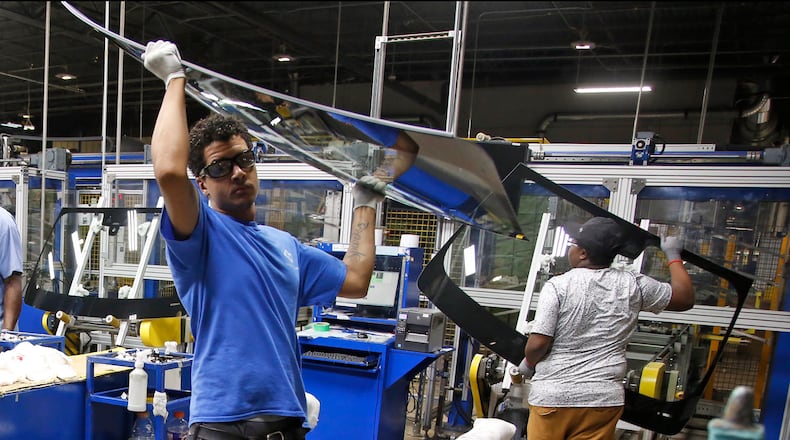“I think that’s a big deal because big projects don’t always follow (ED/GE) timelines,” said Kettering City Manager Mark Schwieterman, a member of the review committee recommending program changes, said of what officials are calling an “off” cycle. “It makes sense.”
RELATED: It’s official: GM is building a $175 million DMAX plant in Brookville
ED/GE currently has April and November deadlines for two cycles for county communities to apply for part of $2.5 million in development funds – a $500,000 increase than in recent years - as incentives for business expansions or moves, said Erik Collins, county community and economic development director said.
The program – which has helped create or retain tens of thousands of jobs since it began in 1992 - needs more flexibility, he said.
“The reality is economic development – when a business is ready to do something – you can’t say timeout,” Collins told West Carrollton City Council earlier this month. “Let’s wait until the next funding cycle.
POPULAR: Austin Landing gets new owner in $134 million deal
“So what we are proposing is – based on the recommendations from the private and public sector – is that we create that in between cycle,” he added.
Other changes that will be part of the next 10-year contracts for member communities will be stricter reimbursement timelines and requiring recipient jurisdiction to have project agreements.
The county has met with 90 percent of communities and given public presentations in Germantown, West Carrollton and Huber Heights, officials said. Englewood and West Carrollton have passed resolutions. Kettering City Council is set to consider it Tuesday, Schwieterman said.
The new contract will also shift criteria for which applicants receive funds, Collins said. The quality of jobs a company is committing to, its payroll, benefits and the prioritizing of “living wage” jobs – those that pay at least $15 an hour – will also be a focus.
RELATED: Businesses plan nearly 550 new jobs in Dayton area
“If we’re going to put taxpayer money into a project, every business is important,” Collins said. “But we want to make sure that we’re funding drivers of the economy.
“We want to make sure that they have benefits, including health and retirement and we really want to prioritize living wage jobs,” he added.
That doesn’t surprise Trotwood Community Improvement Corp. Executive Director Fred Burkhardt, who was also part of the review process.
“ED/GE programs have been a great boon for the city of Trotwood,” he said. “We have seen businesses come to the city, stay in the city, and grow.”
Last year, ED/GE twice awarded Trotwood projects, providing a combined $270,000-plus in funds. But Burkhardt said a $250,000 grant was returned as the company picked Tennessee over Trotwood.
EARLIER: ODOT delays completion of road work impacting holiday season traffic near Dayton Mall
Former Trotwood City Manager Mike Lucking, now West Carrollton’s economic development director, hailed the changes and ED/GE, noting the program is EDGE “one of our primary economic development tools as a city,” having provided $600,000 to three projects that have added more than 300 jobs in recent years.
ED/GE is funded by money collected through the county-wide sales tax. Annual disbursements were $5 million, but were cut to $2 million for several years during the recession that began in 2008, Collins said. Today, the county awards $2.5 million a year.
Since its inception, ED/GE has funded 516 projects that have created more than 27,000 jobs and retained nearly 36,000 others, records show.
Manufacturing has been the focus of more than 18,000 of those jobs, according to the county. More than 7,500 automotive jobs are among the total list. Redevelopment, infrastructure, call centers, and logistics and distribution have all accounted for more than 4,500 jobs each, records show.
EARLIER: Miamisburg land buy first step to revive Mound Connector project
Going forward, jobs in higher growth industries – aerospace, biomedical and information technology, among others – and the project’s impact will receive higher consideration, Collins said.
The greater the impact, he said, the higher likelihood the project would help other cities, “the county and even the region,” he said.
Applicants are also more likely to gain favor in their submission can show a seven-year return on the investment, similar to the private sector model, he said.
About the Author

